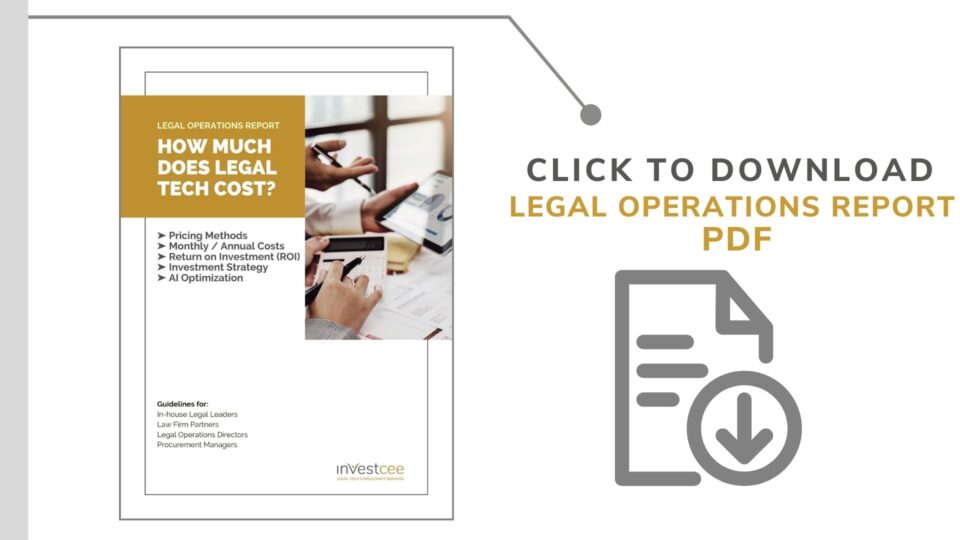Legal teams are comprised of some of a company’s most valuable resources, yet these highly trained, intelligent employees can often lack a place at the decision making table. This is ludicrous and defies logic. Why does this happen? Is it because the legal team is a ‘cost centre’ the resources of which should be kept to a minimum? Or is it because the legal team is sometimes seen as the ‘Department of No’ by the company within which they work?
InvestCEE is keen to help find not only answers but practical solutions to these important questions. For this, InvestCEE has partnered with Xakia Technologies, a corporate legal operations software purpose built to leverage the value of in-house legal teams. This is the first issue of a guest post series by Jodie Baker, Xakia’s Founder and CEO. In this article, Jodie considers what ‘value’ looks like for in-house legal departments. What ‘value’ is added by a corporate legal team, and how is it measured or articulated?
“For legal teams to be valued appropriately, it is critical that legal teams demonstrate the value they add to their business.” (Xakia mission statement)
Commentary regarding the need for legal teams to demonstrate their value has been plentiful. Value added by legal teams to their businesses fall into three categories:
- Tracking legal costs
Historically, the value added by a legal team has been measured by cost savings achieved through bringing legal resources in-house or by seeking better rates from external law firms. Undoubtedly these cost savings are valuable and should be clearly quantified and highlighted by legal managers. However, a simple ‘total’ year on year is insufficient.
The cost of external (and internal) resources need to be measured relative to the size of the organisation, its revenue and market capitalisation as well as the deals, disputes or restructuring the legal team has managed throughout the year. These costs should be benchmarked in the same manner that all other functions or salaries are benchmarked, against organisations of similar sizes and/or within the same industries.
An alternative to this approach may be to treat the internal legal team as a quasi-law firm, charging a nominal hourly rate back to the business. For most in-house lawyers, this approach looks and feels much like the law firm from which they migrated and can work against the collaborative appeal of being part of a broader business, or cement the view of the legal team as little more than a cost centre.
- Value of matters worked on, risk avoided and managed
Measuring the value of contracts, disputes or risk management can draw attention to the critical role the legal team plays in securing key commercial outcomes on valuable matters. By taking note of the value of matters to which the team contributed, actioned or avoided, it would be difficult for a business to ignore how central the role of the lawyers are to the overall business.
Yet the role of the lawyer may vary enormously from central to peripheral, so the value can be difficult to determine, or perhaps overstated by using a simple ‘total’ figure. Consider also circumstances in which a value cannot be ascribed to the matter, such as the hundreds or thousands of marketing approvals required each year, regulatory filings with no monetary value, or even the legal dispute for which the risk is reputational rather than financial.
To place a monetary value on these items may provide an indicative figure for discussion purposes, but it needs to be treated with caution.
- Furthering your company’s strategic goals
A key role of any corporate legal team is to facilitate its company’s ability to achieve its strategic goals. Achieving a strategic goal can rise or fall on the legal framework surrounding it, which makes the legal team critical to the strategic direction of a company. It is important to emphasize this point: the legal team is critical to the strategic direction of a company and the achievement of its strategic goals.
Measurement of the extent to which each and every task undertaken by the legal team furthers a company’s strategy is an important way to demonstrate the value added by the legal team. By measuring the strategic value of a matter – say on a scale of 1 to 10 – and cumulatively measuring the value added by the team to the strategic direction of the company, it becomes clear to all stakeholders that the legal team holds a critical role in the company.
This ‘value add’ metric can alter the manner in which the legal team is viewed in two ways:
- by requiring each legal team member to measure the strategic value of everything they do, individuals are forced to actively engage with the strategic goals of their company. This in turn will inform all legal and risk management decisions (not to mention resource allocation decisions) they make; and
- the business is given a data and evidence based account of the value added by the legal team.
Irrespective of the methodology adopted, any demonstration of legal team value which adopts data based language will provide the business with comfort that value is being added to the company. A focus on company strategic goals will ensure alignment of language between the business and the legal team and is more likely to bring the lawyers to the decision making table.



